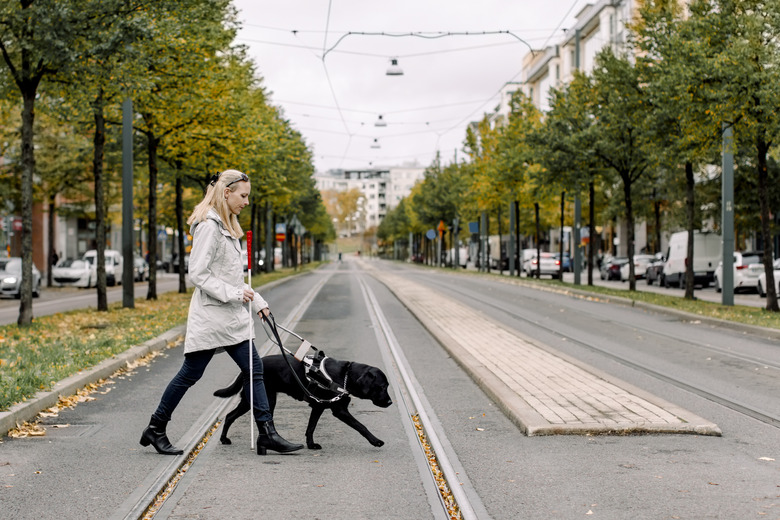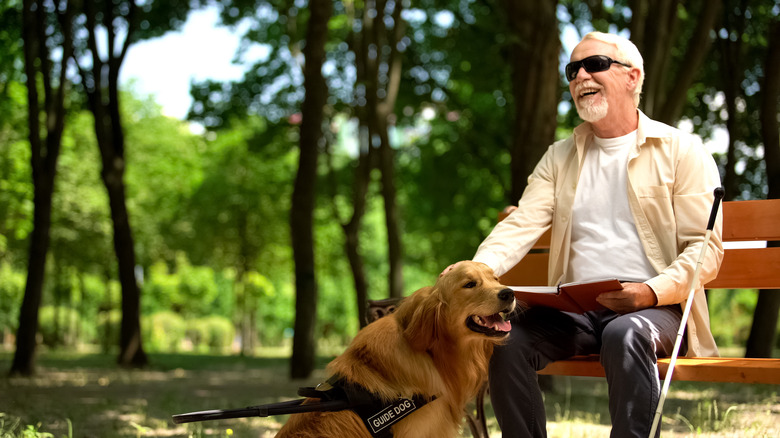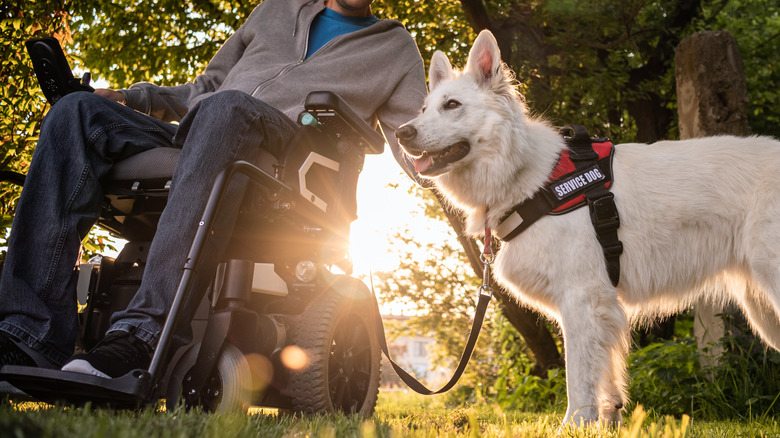The History Of Service Dogs
A golden retriever picking up dropped items for a wheelchair user. A Labrador alerting a diabetic to dangerous drops in blood sugar. A pit bull helping a veteran exit a building during a PTSD episode. Service dogs can be a variety of breeds and can be trained in a multitude of jobs. But to understand the growth of service dogs in recent decades we need to look at one service dog in particular: the first German shepherd guiding a visually impaired person across a busy street.
History of guide dogs in the United States
History of guide dogs in the United States
The history of service dogs in the United States began in 1928 when Morris Frank read a Saturday Evening Post article detailing how Europeans were training dogs to guide visually impaired World War I veterans. Morris Frank, a young man blinded in an accident, contacted Dorothy Harrison Eustis, an American training German shepherds in Switzerland. Eustis agreed to train Frank to use a German shepherd named Buddy as his guide. In return, Frank promised to bring what he learned in Europe back to the United States. In 1929, Morris Frank founded The Seeing Eye. Now located in New Jersey, it is the oldest existing guide dog school in the world.
For decades, Morris Frank and other guide dog users worked to make their dogs accepted in public spaces. These disability rights advocates were often denied access to transportation, entry to shops or restaurants, and even prompt medical care. The Americans with Disabilities Act (ADA), passed in 1990, made it illegal to deny a service dog entry to a public space. With this new law protecting access rights, service dogs started gaining visibility.
All Seeing Eye dogs are guide dogs, and all guide dogs are service dogs. But, not all service dogs guide visually impaired people. In the United States, there are around a dozen established guide dog schools — programs that breed, raise, and train dogs specifically for guide work. After the passage of the disabilities act, organizations training service dogs of all kinds multiplied across the country.
Some models for service dog schools
Some models for service dog schools
While every service dog training school is unique, there are some similarities between the largest organizations. Places like the Seeing Eye can breed, raise, and train hundreds of dogs each year. For that, they need the help of volunteers to raise the puppies for about 15 months before the pups are ready to begin learning their important jobs.
Another similarity between schools is they require their students to come to a central campus — anywhere from 5 to 30 days — to learn how to handle their new service dog. This new partnership between humans and dogs is known as a "team." New handlers sometimes live on campus or commute to get to know their dog companion. They also learn from professional trainers about how the dog can help their disabilities.
Service dog breeds can vary widely
Service dog breeds can vary widely
Since the passage of the disabilities act and the increase of service dogs in the intervening decades, it has become harder to draw a picture of the standard service dog in terms of the breed. The popularity of German shepherds in service work has given way to Labradors, golden retrievers, poodles, or collies as steadfast service dogs. Though some organizations and owners use other breeds. Service dogs can be purpose-bred, genetic-tested, puppy-raised...or they can be adopted from a shelter and carefully trained.
Costs can also vary widely. Though most organizations acknowledge it can cost upwards of $40,000 to train a dog. The portion of that cost is passed on to a handler and can vary from no cost at all to tens of thousands of dollars.
There is no test or identification required to make a dog a service dog, but service dogs must be trained in a task that helps to manage a handler's disability. This training should be done by professionals but can also be undertaken by diligent owner-trainers.
The bottom line
The bottom line
Service dogs in the United States began with Morris Frank and the founding of The Seeing Eye. This institution remains the oldest guide dog school in the world. Guide dogs perform a wide range of tasks, from alerting medical conditions to guiding a person across a busy street. Though the first Seeing Eye dog was a German shepherd, a service dog can be any breed. With the work of disability rights advocates in the twentieth century, service dogs are now an important and widely accepted part of American life.


